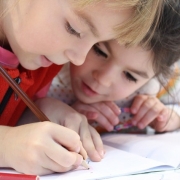Exploring the Wonders of Famous Paintings in Children’s Science Education
The Fascinating World of Famous Paintings in Children's Science Education
Art and science may seem like different worlds, but they often intersect in beautiful and unexpected ways. In this article, we'll journey through the world of famous paintings and discover how they can be a valuable resource in children's science education. Let's delve into the realm of renowned artists and their masterpieces, exploring the connection between famous art and the world of science.
The Beauty of Famous Paintings
Famous paintings have the power to captivate audiences of all ages. These visual masterpieces, created by artist famous in their own right, are not just expressions of creativity; they are also windows into the world of science and nature.
The Science Behind Famous Paintings
Leonardo da Vinci's "The Vitruvian Man"
Leonardo da Vinci, one of history's most famous artists, was also a scientist and inventor. His iconic drawing, "The Vitruvian Man," beautifully illustrates the proportions of the human body, merging art and science seamlessly.
Vincent van Gogh's "Starry Night"
Van Gogh's masterpiece, "Starry Night," captures the swirling motions of the night sky. It's an excellent example of how art can depict natural phenomena, sparking curiosity about the science of stars and galaxies.
Learning from Famous Artists
Pablo Picasso - Exploring Geometry
Picasso's cubist art can be a gateway to understanding geometry and spatial relationships, making it a valuable tool in teaching basic concepts to young scientists.
Claude Monet - Studying Light and Color
Monet's famous water lilies series is a visual exploration of how light and color interact. This can inspire discussions about optics and the science of color perception.
Fact Section: FAQs about Using Famous Paintings in Children's Science Education
Q1: How can famous paintings enhance children's science education?
A: Famous paintings can make science more engaging and relatable. They offer visual representations of scientific concepts, sparking curiosity and creativity in young learners.
Q2: Where can I find more famous paintings to use in science education?
A: Online art galleries, museums, and educational websites like ESL Games Plus provide access to a vast collection of famous artworks suitable for science education.
Q3: Are there age-appropriate famous paintings for younger children?
A: Yes, many famous paintings feature themes and subjects that resonate with younger audiences. Teachers and parents can select artworks that align with a child's age and developmental stage.
In conclusion, famous paintings offer a unique gateway to connecting art and science in children's education. They inspire curiosity, promote creative thinking, and provide visual representations of scientific concepts. To explore a wide range of educational resources, including famous artworks, visit ESL Games Plus. Bring the wonders of famous art into your child's science education journey today.











